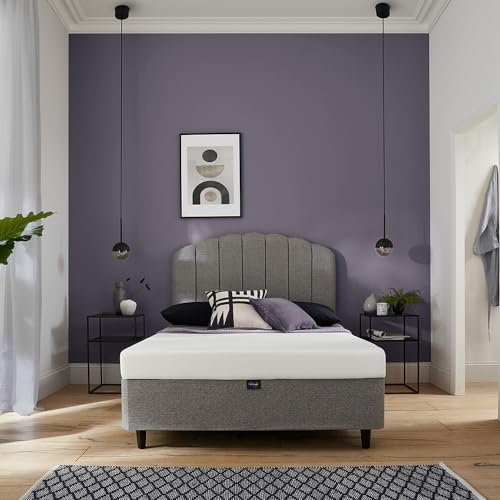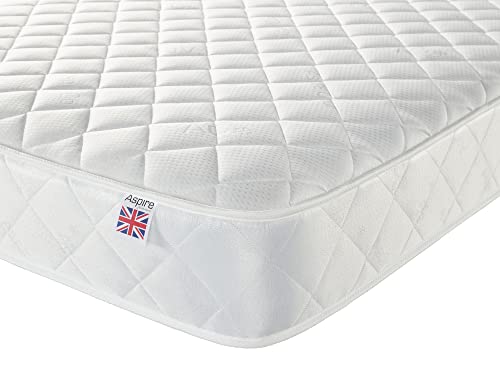The 10 Most Terrifying Things About Bunk Bed Kids
페이지 정보

본문
 Are Kids Ready For Bunk Beds?
Are Kids Ready For Bunk Beds?Bunk beds can be the ideal solution for kids' rooms. They can be used as a study space or playroom during the day.
If your children are ready to move into bunk beds You will need to assess their dexterity and maturity. You will also need to consider their sleeping habits.
Age of Transition from the Top Bunk
The age at when children are ready for bunk beds can differ greatly. However, most experts recommend that children not sleep on the top bunk until they're at minimum six years old. This is because kids under the age of 6 are more likely to lack the resiliency and dexterity required to be able to climb the ladder safely. They may also have difficulty understanding and adhering to safety guidelines like not climbing on the guardrails, or jumping off the top bed.
It is also important to think about how rambunctious your child is when determining if they're ready for a bunk bed. Children who tend to be reckless or who do not respect the rules shouldn't use bunk beds because they could result in serious accidents. Additionally, children who are at risk of falling out of bed or are particularly tall might not be able to safely use the top bunk even if they are six years older.
As kids get older, they might outgrow their bunk beds. In this case it's a good idea to transition to a traditional bed to allow them to enjoy more spacious and comfortable sleep. It could be as simple as switching to twin beds or as complex as investing in a fun treehouse-style bunk bed, such as the Mathy by Bols that can transform into a full-size bed.
It is recommended to start at the bottom bunk then work your way upwards. By doing this, you can ensure that your child is mentally and physically prepared for the transition. This can help prevent them from becoming discouraged if aren't able to immediately be able to move up to the top bunk.
It's also an excellent idea for parents to teach their children the importance of adhering to the safety rules no matter where they sleep on the bed. This includes teaching children not to jump off the bunk, to not hang things from the rails and to use the ladder in a safe manner.
Safety Considerations
Bunk beds are a great solution for children, but you should be aware of the dangers. Understanding the risks, adhering to the assembly instructions of the manufacturer, and taking other precautions can ensure that your children are having fun in bunk beds, without putting them in danger.
One of the biggest security concerns is the ladder, which can be used to climb to and from the top bunk. Unsupervised, children may use the ladder to play, which could have dangers. Ladders that are improperly secured could fall off the side of the bunk bed, pinning children underneath and potentially result in fatal head injuries. Children may also lose their balance when climbing the ladder due a lack of care.
To minimize the risk, teach your child to use the stepladder for climbing up and down the ladder and not as a toy. It is also an ideal idea to place some form of light by the ladder, like an evening light. This will allow children to see their ways up and down in the dark, and prevent them from falling or tripping over furniture or toys in the room.
Safety considerations also include making sure the mattress fits the frame of the bunk bed properly making sure the bed is kept away from blinds, windows, ceiling fans and cords, and ensuring there are no sharp edges on the ladder or bunks. It is also important to avoid rough play and horseplay on the bunks because they can result in injuries and structural damage.
Before you let your kids into the bunks, make sure that there are no loose bolts, weak spots or other dangerous areas. Also, make sure there aren't any gaps or openings in the safety railing or the headboard that could allow a child's head and legs to be trapped. These gaps should be no larger than 3.5 inches. You should also ensure that the rails for guards on both sides of the top bunk are at least 5 inches over the mattress, as suggested by safety standards.
How to Choose the Right Bunk Bed
There are a variety of options for bunk beds that can create a fun and social room for children. You can maximize space and accommodate a range of sleep needs and preferences by selecting the best kids bunkbeds bunk arrangement for your bed.
Begin by looking through a variety of materials and finishes to find the best fit for the style of your bedroom for your child. Take into consideration the style of headboards and feetboards as well as your preference for slats or solid panels or bent bed ends. Choose a color and finish that best complements your home's existing decor and stands to the test of time and trends.
Then, consider if you want the bunk beds that come with a ladder, angled ladder, or staircase. Each provides unique safety and convenience benefits. Ladders and angled ladders be smaller in size, but are harder for children who are younger to climb, while staircases require more assembly time and can be costly.
Standard bunk beds comprise of two perpendicular twin beds stacked on top of each other and a ladder or staircase to access the top. Think about a kid loft bunk bed bed that has storage space underneath or a desk. These beds can accommodate a full-size bed on the bottom and a twin-size on top. This provides an option for sleeping that is flexible for shared bedrooms or holiday homes.
It's time to start shopping for the bunk bed that is ideal for your family. Visit furniture stores, home improvement centers and online retailers for the perfect bunk bed to satisfy your children's requirements.
When selecting a bunk bed, pay special attention to the materials used in the frame as it plays a critical part in your child's security and comfort. Avoid low-end, cheap bunk beds for kids materials that could break or sag rapidly. Solid woods are superior to particle boards, which consist of smaller pieces of wood which have been glued together. They're more robust and durable.
Getting Started
There comes a time in the lives of most kids where they absolutely love the idea of bunk beds. They're the perfect solution for sibling rivalry over who can sleep on the top bunk, and they are a great way to accommodate more than one child in a small space. Bunks can also be a fun and practical way to entertain friends for sleepovers without the need of additional bedding.
There are some things you need to consider when selecting the best bunk beds for your family. Consider whether your children can get into and out of the top bunk safely and comfortably. This is especially crucial for kids who are prone to sleepwalking or have difficulty avoiding rolling over the bed's side. If they can't do it without difficulty then a ladder could be the best option.
Another important consideration is the overall design and style of the bunk bed. You'll want to make sure that it is in line with the design of your bedroom and that your kids bunk beds with mattress are happy with it. Bunks come in a variety of styles, from traditional to modern. They can also be made out of various materials, such as pine and MDF, depending on your personal preferences and the cost you're comfortable with.
It is a good idea to write down an inventory of all the tools you'll need before you begin making your bunk beds. This will save you from disappointments, such as finding that you've missed an important screw midway through the construction.
Getting creative with your bunk bed can greatly increase its appeal for your kids. There are a myriad of interesting accessories you can choose from. For instance themed bed tents could transform the top bunk into a castle or fort. Your kids will love to play in the bunk all day and night. ).
 You will have to encourage your children to put their toys away when they have finished playing. A bunk bed with built-in storage is a good choice for this, as it will allow you to keep your kids' bed bedroom neat and tidy while giving them access to their favourite books and toys.
You will have to encourage your children to put their toys away when they have finished playing. A bunk bed with built-in storage is a good choice for this, as it will allow you to keep your kids' bed bedroom neat and tidy while giving them access to their favourite books and toys.- 이전글"A Guide To SEO Link Building Services In 2023 24.10.18
- 다음글10 Things That Your Family Teach You About Double Glazing Window Handles 24.10.18
댓글목록
등록된 댓글이 없습니다.

